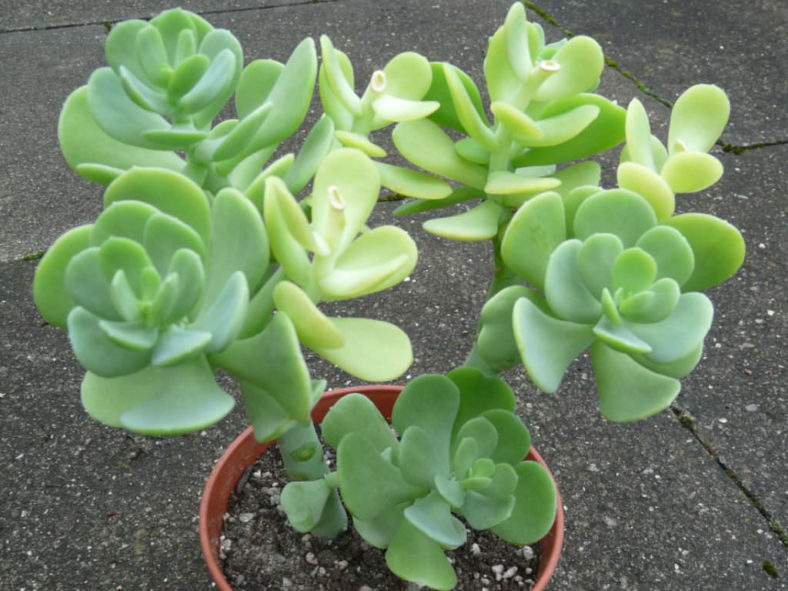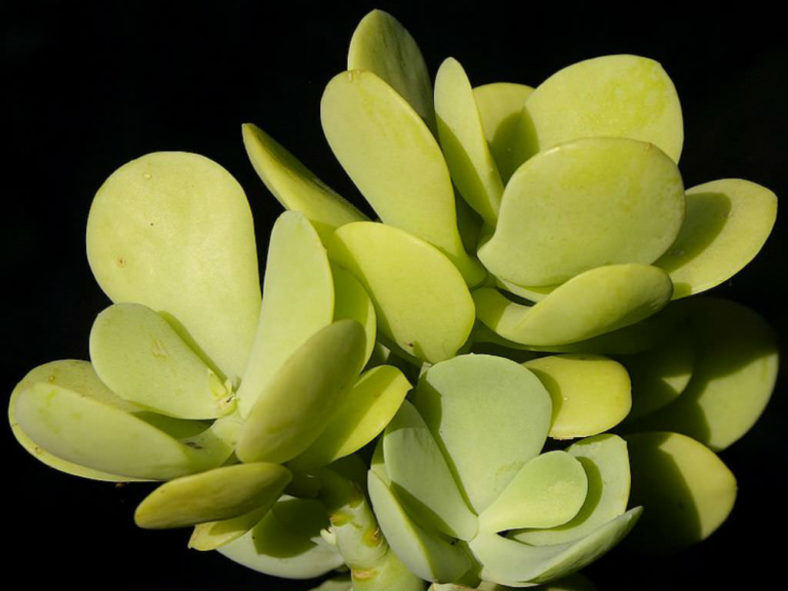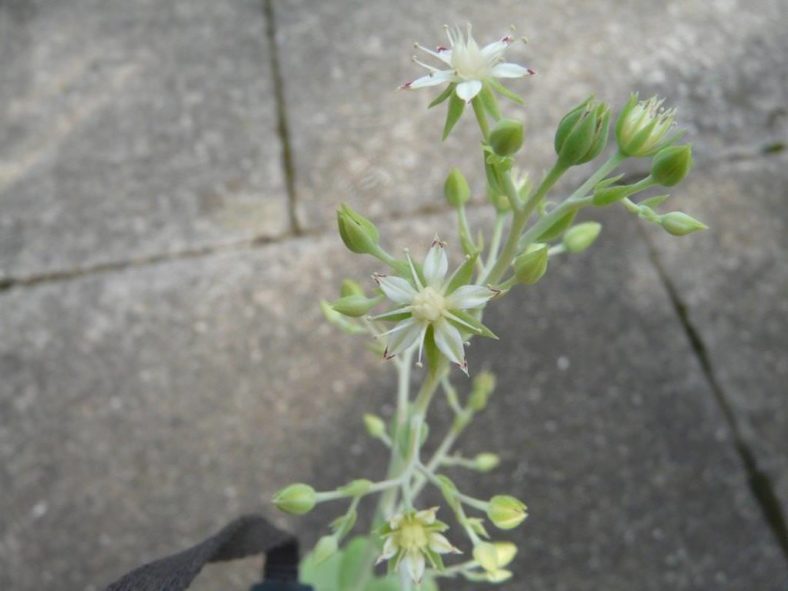Scientific Name
Sedum alexanderi Eggli
Synonym(s)
Sedum platyphyllum
Scientific Classification
Family: Crassulaceae
Subfamily: Sempervivoideae
Tribe: Sedeae
Genus: Sedum
Origin
Sedum alexanderi is native to Mexico.
Description
Sedum alexanderi is a small succulent shrub with erect or trailing stems and light green or yellow leaves. The stems can grow up to 32 inches (80 cm) long and 0.8 inches (2 cm) in diameter at the base. The leaves are spoon-shaped and can measure up to 3.2 inches (8 cm) in length and 2 inches (5 cm) in width.
The flowers are white with red markings in the apical third, especially near the margins, and can reach a diameter of 0.8 inches (2 cm). They appear in winter on a branched stem that can grow up to 12 inches (30 cm) tall.

Hardiness
USDA hardiness zones 9b to 11b: from 25 °F (−3.9 °C) to 50 °F (+10 °C).
How to Grow and Care
When growing Sedums, keep in mind that these plants need very little attention or care. They will thrive in conditions where many other plants thrive, but also do just as well in less hospitable areas. They are ideal for that part of your yard that gets too much sun or too little water, making it difficult for other plants to grow. A common name for Sedum is Stonecrop because many gardeners joke that only stones need less care and live longer.
Sedum is easily planted. For shorter varieties, simply laying the plant on the ground where you want it to grow is usually enough to get it started there. They will send out roots from wherever the stem touches the ground and root itself. If you want to ensure that the plant begins there, add a very thin layer of soil.
You can break off one of the stems for taller varieties and push it into the ground where you want to grow it. The stem will root very easily, and a new plant will be established in a season or two.
See more at How to Grow and Care for Sedum.
Links
- Back to genus Sedum
- Succupedia: Browse succulents by Scientific Name, Common Name, Genus, Family, USDA Hardiness Zone, Origin, or cacti by Genus
Photo Gallery
Click on a photo to see a larger version.


